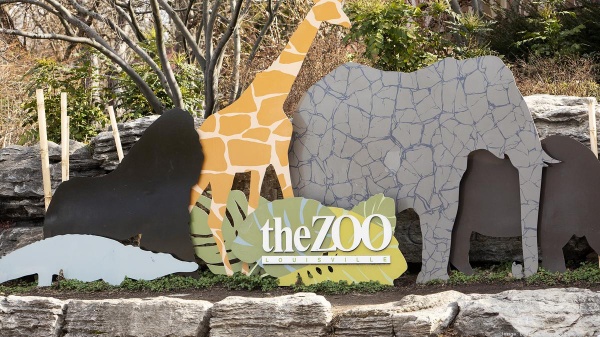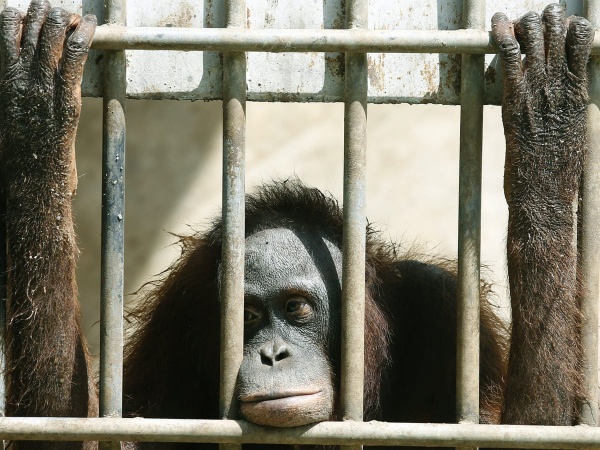Over the past 30 years, many established zoos have endeavoured to improve the level of care for animals and rehabilitate the public perception of zoos. However, despite many good intentions and considerable financial effort, the concept of zoos is nonetheless fraught with many serious problems. Should zoos be banned or not – here are the 10 good or bad things about the zoo.
Good things

1. Zoos are protecting endangered species
Zoos are not like the cruel animal menageries from the middle ages. They want to provide entertainment, but they are greatly concerned with the protection and conservation of animals and their natural habitats. They provide a protected environment for endangered animals, and also help in raising awareness and funding for wildlife initiatives and research projects. Therefore, zoos educate the public about animals and are contributing their part to the conservation of many species.
2. Educating the public
Education is another positive feature of zoos. Many children and adults in cities can only see wild animals in TV or the internet. Zoos offer them the unique experience of contemplating real animals. They can smell them, see how they move and listen their sounds in real life. This is a much more vivid and enriching experience than the one you can get through a screen. Thanks to zoos, kids and adults develop empathy towards animals. In addition, people don’t need to travel to exotic places to see the animals, which is beneficial to the environment. Ultimately, zoos provide an affordable opportunity to see animals, giving everyone an equal chance to experience wildlife first-hand and learn about nature.
3. Helping to fight extinction
Given that the mass destruction of wildlife habitats across the globe continues unabated and species such as elephants, big cats, birds, primates, rhinos, reptiles, and many others are at real risk of extinction, larger zoos have now stepped in with the hopes of stopping or at least slowing the decline of these endangered species. Zoos study animal breeding and thanks to them many wild animals in captivity can reproduce. Should zoos be banned, we would certainly loose some species. This is particularly important in the case of endangered species.
4. Conducting valuable research
Zoos are crucial for research. Being able to observe and study animals is crucial if we want to contribute to help them and repair the ecosystems. They also help in reducing human-animal conflicts and in better understanding the needs and psychology of animals. Zoos serve as laboratories to learn more about how to fight animal diseases and develop effective animal anaesthetics and other treatments to help more animals in the future.
5. Economic resources for communities
Zoos play an important economic role, especially in the less developed areas of the world, where they are an important income source for many communities. Zoos do more than just provide a place for animals to reside. They are a place that provides jobs, creates tourism opportunities, and can even be an economic nexus for a community.
Bad things

1. Zoos entertain humans at the expense of animals
Critics, environmental activists and a majority of animal rights activists insist that zoos, despite their noble intentions, are inherently immoral and primarily serve to entertain humans at the expense of animals. They argue that zoos don’t educate the public enough to justify keeping animals captive. We should ask ourselves whether the entertainment provided by zoos especially by animal shows and similar activities does really justify the price that the animals are paying for it.
2. Holding animals in captivity has questionable ethics
Zoos are a typical form of family entertainment, but associating leisure and fun with the contemplation of animals in captivity can send the wrong signals to our children. There may be educational value in a zoo, but keeping animals in captivity offers an ethical dilemma. Some animals, like the average house cat, will thrive in a captive environment. Others, like orcas, do very poorly when living in captivity.
3. Detrimental to the animals’ physical health
There are many animal welfare issues recorded daily and they often have to live in poor conditions, especially in less-developed, poorer countries. In addition, most animals that are exhibited in zoos are wild exotic animals (such as tigers and lions) that naturally need lots of space and even change their habitat over time. Due to the limited space in zoos, these animals cannot move as they naturally would, which inevitably leads them to develop health issues. Animal cruelty in zoos continues to be extremely common. There are continuous cases of animals abused by visitors and zoo workers. Many of them are reported every week in the media, however, the large majority are kept secret and those responsible are never held accountable or punished.
4. Detrimental to the animals’ psychological health
Animals in captivity are deprived of many things that are important to them, as a result they become lonely and bored. Animal behaviourists often see zoo animals suffering from problems not seen in the wild, such as clinical depression in clouded leopards and gibbons, obsessive-compulsive disorder (OCD) in brown bears, and anxiety in giraffes. The animals experience these issues due to smaller enclosures, changes in diet and activities, and the introduction of things not seen in the wild, such as medical exams and people with cameras.
5. Lack of regulation & control in many zoos
Another issue with zoos is that there is only insufficient regulation of zoos in many countries. In fact, many zoos are rather free regarding how they want to treat their animals and in some countries, animals are even just considered as property instead of living organisms that need proper regulatory protection. Even if there is some form of regulation in place, most countries’ ability to control zoos for animal welfare is very limited, meaning that zoos can basically treat animals however they want.